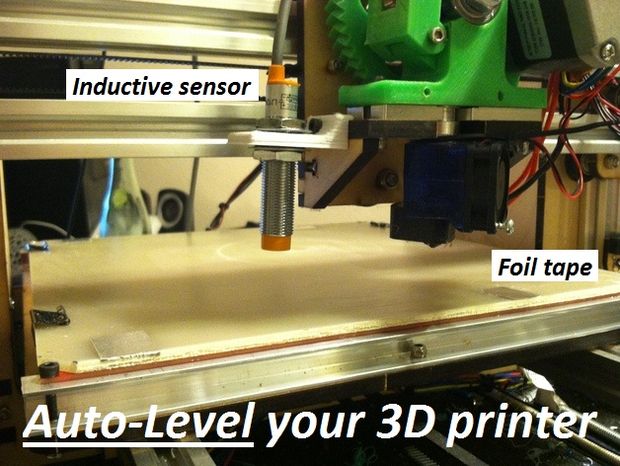
Tired of manually adjusting your 3D printer’s build plate level? Now there’s a way to do this automatically on printers that don’t have the feature.
Leveling is perhaps the most critical operational action required by most personal 3D printers. If not level, the extruder could either deposit plastic too high off the print surface causing poor adhesion and accuracy, or the extruder could be too close, potentially causing filament jams and lack of extruded material.
You must have a level bed to succeed.
Unfortunately, the process of leveling can be bothersome on some 3D printers, as the procedure requires time and effort. Now there’s a way to add an auto-leveling capability to 3D printers using the Marlin firmware – and this means most non-mainstream 3D printers.
An Instructable describes a method to add auto-leveling. Basically you’re replacing the Z end-stop (the switch that detects your print platform has risen to its maximum height) with a sensor strapped to the extruder.
Before each print, the extruder will move to several strategic locations around the print surface and slowly test the depth by raising the platform until the sensor triggers. Then the firmware “knows” the height of that position on the print bed. During printing of the first layer the firmware adjusts the Z axis to counteract any non-level measurements.
You’ll require some minor hardware, cabling and a sensor mount likely printed yourself, as well as a version of the Marlin firmware that includes the auto-leveling feature.
You’ll also need some time and DIY skills to complete this upgrade. If you don’t happen to have either of those, you might consider adding “auto leveling” to the list of features for the next 3D printer you acquire.
Via Instructables

